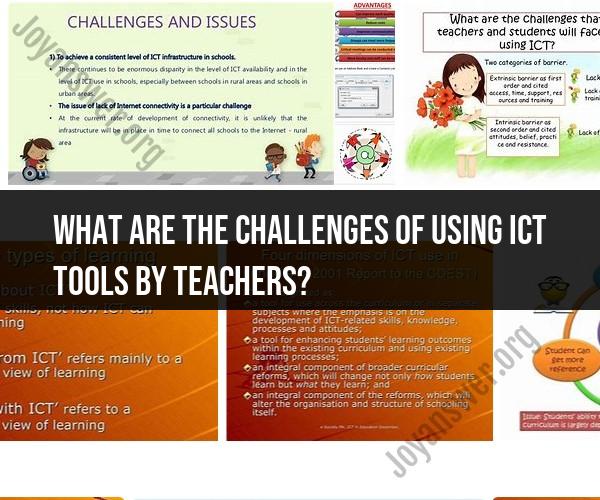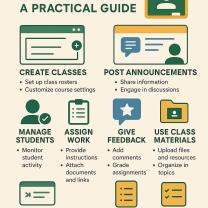What are the challenges of using ICT tools by teachers?
The integration of Information and Communication Technology (ICT) tools in the classroom has become an essential aspect of modern education. While these tools offer numerous benefits, educators often face challenges when implementing them effectively. This article provides valuable tips for educators to navigate these challenges and harness the full potential of ICT tools in education.
Plan and Prepare:
- Begin with a clear plan outlining your educational goals and how ICT tools can help achieve them.
- Ensure that both you and your students are familiar with the chosen tools before introducing them into the classroom.
Professional Development:
- Invest in ongoing professional development to stay updated with the latest ICT trends and tools.
- Collaborate with colleagues to share knowledge and experiences related to ICT integration.
Infrastructure and Technical Support:
- Ensure that your school has the necessary technical infrastructure, such as reliable internet access and well-maintained devices.
- Establish a support system for technical issues, either through an IT department or external support.
Accessibility and Inclusivity:
- Consider the diverse needs of your students, including those with disabilities, and ensure that ICT tools are accessible to all.
- Provide alternative options for students who may not have access to technology outside the classroom.
Select Appropriate Tools:
- Choose ICT tools that align with your teaching objectives and curriculum.
- Prioritize tools that are user-friendly and age-appropriate for your students.
Engage and Motivate:
- Create interactive and engaging activities using ICT tools to keep students motivated and active in their learning.
- Encourage collaboration and peer-to-peer learning through digital platforms.
Data Privacy and Security:
- Familiarize yourself with data protection regulations and ensure that you and your students follow best practices for online security.
- Protect sensitive student information and educate students about responsible digital citizenship.
Assessment and Feedback:
- Use ICT tools for formative and summative assessments to track student progress.
- Provide timely feedback using digital platforms to enhance learning outcomes.
Adapt and Evolve:
- Be flexible and open to adjusting your teaching methods and ICT tools based on student feedback and evolving technology.
- Embrace innovation and experimentation in your teaching approach.
Continuous Evaluation:
- Regularly assess the effectiveness of ICT integration in your classroom.
- Gather feedback from students and colleagues to make improvements.
Balance Screen Time:
- Maintain a balance between digital and non-digital activities to prevent over-reliance on screens.
- Encourage outdoor activities and face-to-face interactions to support holistic development.
Integrating ICT tools in the classroom can revolutionize the learning experience, but it comes with its share of challenges. Educators who plan, adapt, and stay committed to improving their ICT integration skills will find that these tools enhance their teaching and provide students with valuable skills for the digital age. By following these tips, educators can navigate the challenges and create a dynamic and engaging learning environment for their students.













